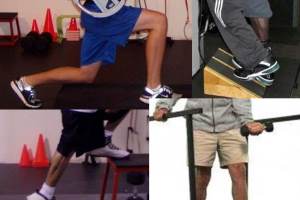statFor some women, it's about making an elegantement at special events or being a couple…

What is “Vibration Therapy”?
 Vibration therapy is also called “whole body vibration,” “biomechanical stimulation,” and “biomechanical oscillation.” So, what is it? It is a physical therapy technique using vibration to stimulate an increase in muscle and bone mass. It involves using specialized equipment to deliver low amplitude, low frequency vibration directly to broad areas of the body.
Vibration therapy is also called “whole body vibration,” “biomechanical stimulation,” and “biomechanical oscillation.” So, what is it? It is a physical therapy technique using vibration to stimulate an increase in muscle and bone mass. It involves using specialized equipment to deliver low amplitude, low frequency vibration directly to broad areas of the body.
Vibration therapy has been used to help many different kinds of people maintain or regain their musculoskeletal health. Russian cosmonauts and American astronauts in particular have a long history of using this technique. Zero gravity results in underused muscles and under-stressed bones. Space travelers who remain in orbit for extended periods of time suffer from fragile bones and weak muscles upon returning to earth, unless they use some form of therapy to counteract the effects of zero gravity. In this context, it can help these unique professionals maintain and restore lost bone and muscle mass. But vibration therapy has much broader application in the areas of physical rehabilitation and athletic performance.
It can be very useful to individuals who may be unable to exercise vigorously enough to build bone and muscle mass in more conventional ways because of advanced age, injuries or other health problems. Postmenopausal women are often good candidates for this therapy, since it is common for them to lose bone mass due to a lack of estrogen. Patients with cerebral palsy—a condition that greatly restricts physical movement and therefore results in bone and muscle loss from lack of use—have also been shown to benefit from vibration therapy. One 2013 study performed in New Zealand showed that vibration therapy helped a group of adolescents with mild cerebral palsy regain some of the lost bone mass in their legs and spine, and improve muscle mass in the legs. This allowed them to walk greater distances in a six-minute period. Before the therapy, the group could walk an average of 938 feet. Afterward, they could walk an average of 1,030 feet—an improvement of nearly 10%.
It has the added short-term benefit of improving muscle response. These treatments cause more muscle fibers to be activated than are activated during a conscious muscle contraction. The result is that muscles subsequently contract more rapidly and completely. This generates greater performance both in strength and response times. Researchers found, however, that vibration therapy must be regulated adequately. If it is too intense or lasts too long it will reduce performance due to muscle fatigue.
Another short-term benefit from vibration therapy is improved circulation—both in blood vessels and in the lymphatic system. Increased circulation has been shown to aid in healing and rehabilitation.
For long-term benefits, repeated use of vibration therapy to the point of exhaustion can help improve the “explosive power” of muscles, which is good news for certain types of athletes, such as sprinters, who rely on short, powerful bursts of energy to win competitions. Also, because vibration therapy puts almost no stress on joints, it can be perfect for those who have a difficult time performing traditional exercise, such as the elderly, ill, overweight and injured.
Advocates of vibration therapy have claimed that these techniques can prove beneficial in treating arthritis, multiple sclerosis, tinnitus, phantom limb syndrome, fibromyalgia and ulcers. They have also found that vibration therapy can enhance the lymphatic system, increase metabolism and help wounds heal faster.
While vibration therapy can be a useful physical rehabilitation and athletic training tool, researchers warn that it is not a substitute for a healthy lifestyle in able-bodied people. Regular exercise and a healthy diet are still the critical ingredients when it comes to keeping your body in top working condition.




